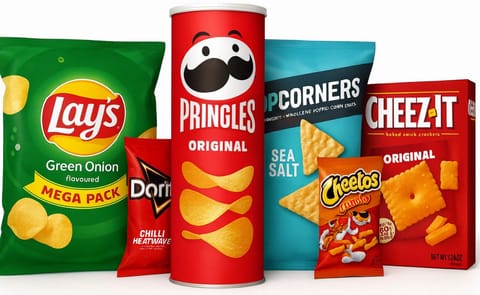Sodium
New York City Health Department Announces Targets for Voluntary Salt Reduction in Packaged & Restaurant Foods

Americans consume roughly twice the recommended limit of salt each day – causing widespread high blood pressure and placing millions at risk of heart attack and stroke – in ways that they cannot control on their own. Only 11% of the sodium in Americans’ diets comes from their own saltshakers;nearly 80% is added to foods before they are sold.
Through a year of technical consultation with food industry leaders, the National Salt Reduction Initiative has developed specific targets to help companies reduce the salt levels in 61 categories of packaged food and 25 classes of restaurant food. Some popular products already meet these targets – a clear indication that food companies can substantially lower sodium levels while still offering foods that consumers enjoy.
The Health Department will solicit additional comments on the targets this month, and the initiative will adopt final targets this spring.
The goal of the initiative is to cut the salt in packaged and restaurant foods by 25% over five years – an achievement that would reduce the nation’s salt intake by 20% and prevent many thousands of premature deaths. The sodium in salt is a major contributor to high blood pressure, which in turn causes heart attack and stroke, the nation’s leading causes of preventable death. These conditions cause 23,000 deaths in New York City alone each year – more than 800,000 nationwide – and cost Americans billions in healthcare expenses.
“Consumers can always add salt to food, but they can’t take it out,” said Dr. Thomas Farley, New York City Health Commissioner. “At current levels, the salt in our diets poses health risks for people with normal blood pressure, and it’s even riskier for the 1.5 million New Yorkers with high blood pressure. If we can reduce the sodium levels in packaged and restaurant foods, we will give consumers more choice about the amount of salt they eat, and reduce their risk of heart disease and stroke in the process.”
Once finalized, the targets will provide a comprehensive framework for reducing sodium in the nation’s food supply – and a way to monitor progress. The initiative includes two-year and four-year targets for each category of food, and it leaves ample room for variety within each category. If a company commits to the sodium target in a particular food category, the target will apply to its overall portfolio in that category – not to each individual product. A company selling three equally popular lines of crackers could keep one type extra salty as long as its overall cracker portfolio met the target for crackers, measured in milligrams of sodium per 100 grams of cracker. The proposed targets are posted at nyc.gov/health/salt.
Until February 1, the Health Department will solicit additional comments from the food industry, especially from those companies that have not yet participated in the target-setting process, as well as consumer organizations and other interested parties.
The recommended daily limit for sodium intake is 1,500 mg for most adults (including anyone who is black or over 40) and 2,300 mg for others. Some food products, such as deli-meat sandwiches, pack that much sodium in one serving. But much of the salt in Americans’ diets comes from breads, muffins and other foods that don’t taste salty. Salt levels can vary dramatically among popular products in the same category, such as breakfast cereals, indicating that lower levels are both technically feasible and commercially viable.
Other countries are already reducing salt in packaged and restaurant foods. In the United Kingdom, a similar collaboration between the food industry and government has already resulted in salt reductions of 40% or more in some food products, with the overall goal of reducing the salt in processed and restaurant foods by one third by 2010. Canada, too, is actively addressing the issue, and Australia, Finland, Ireland, and New Zealand have all launched large scale, countrywide initiatives to help reduce the salt in their foods.
National and international health organizations have reviewed the proposed targets and are now voicing support for the initiative. “The American Heart Association applauds the efforts of the National Salt Reduction Initiative to proceed with this very carefully focused effort to reduce sodium in prepared foods,” said Dr. Clyde Yancy, the association’s president. “The American Heart Association recognizes the potential benefit to many Americans of reducing sodium intake. Consuming too much sodium is associated with high blood pressure, a risk factor for heart attack and stroke. Reducing sodium in processed foods, which account for the majority of sodium consumption in the United States, could significantly decrease risks for cardiovascular disease, which remains the nation’s leading cause of death.”
“Excess sodium greatly increases the chance of developing hypertension, heart disease and stroke,” said Dr. J. James Rohack, president of the American Medical Association. “The AMA has long supported a reduction of sodium in processed foods, fast food products and restaurant meals as a means to lower sodium intake and reduce the risk for cardiovascular disease among Americans.”
The National Salt Reduction Initiative has received a great deal of support from philanthropists and donors, including the W.K. Kellogg Foundation. Funding for the evaluation of population salt intake was provided by the Robert Wood Johnson Foundation, the New York State Health Foundation, the National Association of County &City Health Officials and the federal Centers for Disease Control and Prevention.








